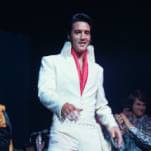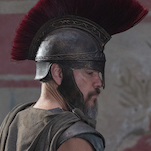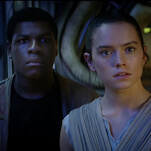Hotline Miami 2 is bigger, bloodier, and more contemplative
What could possibly drive a person to kill another human? A sense of duty? The urge to protect family or country? A desire for vengeance or something they feel they’re owed? Maybe it’s boredom with the daily grind, grasping for the tiniest sliver of control in a frustratingly unjust world? Maybe we just like violence. Maybe it feels good. Maybe violence—violence carefully focused against bad people—makes the world a better place.
These are the questions Hotline Miami 2: Wrong Number is fixated on. Its cast of ne’er-do-wells embarks on separate-but-connected murder sprees, al with their own motivations and intentions, like the crooked cop who slaughters mobsters and hides his guilt behind a detective’s badge or the gang of aimless punks who seek fame by emulating the killing sprees of their masked vigilante idol. While Hotline Miami’s silent killer would don different masks to enhance his sprees with new weapons or techniques, the cast members of Wrong Number mostly stick to their own individual skills, locking players into certain styles of combat depending upon which character is in focus. Tony, in the tiger mask, throws fatal punches, but he can’t use any weapons whatsoever, making stealth more important than ever. Alex and Ash work as a duo, wielding a chain saw and gun respectively, which makes it easier to take out enemies both near and far, but it also makes them a much larger target.
Limiting the player’s choices from one level to the next may seem like an arbitrary way of making the game more challenging and narrow, but it also helps to differentiate the characters and advance the story. While the previous game had an intentionally vague narrative that played off the audience’s expectations and perceptions of reality, Wrong Number’s story is nuanced and even sad. No longer relying on the shock value of sex and violence to surprise players, it opts instead to weave a complex tale of corruption, betrayal, and greed.
The soldier is wildly outnumbered in his levels for the same reason the copycats are in the dark about how deep they’ve gotten in theirs: so that players can put together all of the story’s disparate pieces while the characters remain ignorant and self-involved. There is one grand narrative being told here, and like any good conspiracy, everything is connected. If any one character knew too much or became too powerful, nothing interesting would happen. Everyone is corruptible. All the characters makes mistakes because they don’t see the bigger picture, and by the time the player does, it’s already too late. The fractured timeline and interconnected vignettes, coupled with the exploitative gore and retro aesthetic, make the game feel like a Tarantino film more than anything in recent memory.

![HBO teases new Euphoria, Larry David, and much more in 2026 sizzle reel [Updated]](https://img.pastemagazine.com/wp-content/avuploads/2025/12/12100344/MixCollage-12-Dec-2025-09-56-AM-9137.jpg)






































